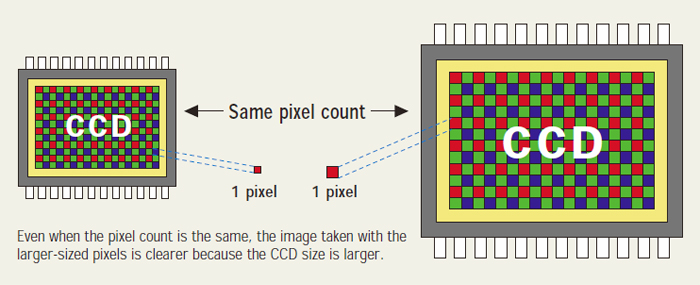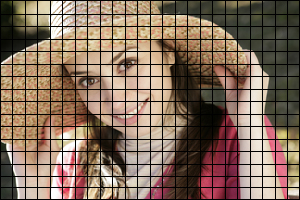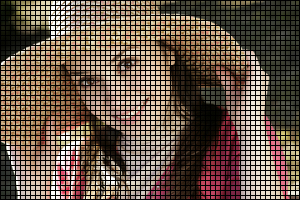Text begins from here.

 |
When magnified, the surface of a CCD looks like a large, dot-filled grid. Each of these dots is a light receptor, called a photodiode. One dot equals one pixel, which is the smallest unit of an image. Terms like 2-megapixel (2 million pixels) and 4-megapixel (4 million pixels) are used to describe CCD sizes. As the pixel count increases, the more detailed the image becomes. In addition, as CCD and image sizes increase, the amount of light collected also increases, resulting in a clearer image. |
"Dot," "pixel" and "image pixel" all have the same meaning and indicate the smallest component of a digital image. |
||||||
While the resolution of a film camera depends on the quality of the lens, the resolution of a digital camera depends on the number of pixels in the CCD. This is because a digital camera's CCD records an image using a fixed grid pattern. |
||||||
|
CCD performance, however, is determined by more than just the total number of pixels. Larger pixels allow more light to be captured. If two CCDs have the same resolution (same number of pixels), the larger CCD will have a clearer image. |
 |
Similar to a TV, CCD size is measured diagonally using inches, e.g., 2/3 inch (8.8 x 6.6 mm), 1/2 inch (6.4 x 4.8 mm) and 1/3 inch (4.8 x 3.6 mm). |
Total Number of Pixels and Effective Pixels |
The total number of pixels describes the number of light receptors contained on a CCD. However, not all of these pixels are used to create an image. Some pixels are trimmed away to produce the same image aspect ratio as film, while others are used by data transfer circuits. Collectively, they reduce the actual number of pixels available to record the image, leaving an amount referred to as "effective pixels." |


